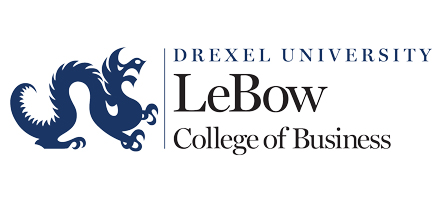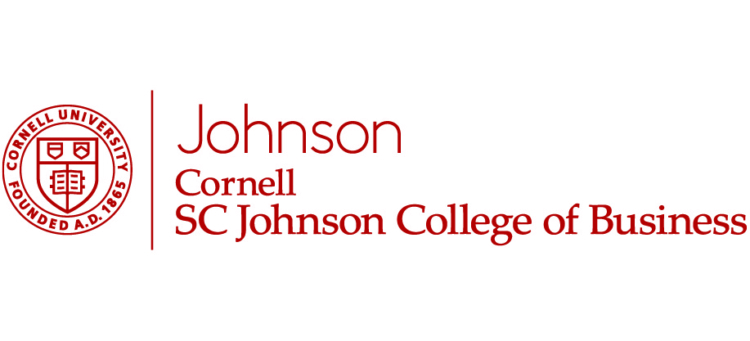
Yale School of Management has split its Executive MBA classes into three for social distancing
For the first time since the COVID-19 pandemic broke in March, Yale University’s School of Management welcomed MBA students back to its campus for in-person classes on July 10.
In this case, it was Yale’s incoming cohort of Executive MBAs who began a nine-day residency on the otherwise empty Yale campus. For the remainder of their first year, they will attend in-person and virtual classes every other weekend while continuing their professional lives. It’s the first of SOM’s master’s degree programs to resume in-person classes since the shift to remote instruction four months ago. And their arrival is also a harbinger of the new normal that MBA students are likely to experience when their classes resume in late August.
For Yale, it’s a controlled pilot with an incoming class of 77 students, 16 of them deciding to take advantage of the hybrid format SOM has adopted to do their classes remotely. “As the first class back, we’re leading the way in trying to figure everything out,” says Wendy Tsung, assistant dean of the school’s Executive MBA program. “It is a test to see what we can do and the type of environment we can create to keep faculty and students safe.”
A MONTH-LONG VIRTUAL ORIENTATION PRECEDED THE ARRIVAL OF THE LARGEST EMBA CLASS IN THE SCHOOL’S HISTORY

Wendy Tsung, assistant dean of Yale SOM’s Executive MBA program
The class is the largest in the program’s history, three more than the record of 74 students who had enrolled a year earlier. It boasts an accomplished group of leaders from a variety of industries and sectors within each area of focus. They include chief compliance officers, lawyers, physicians, engineers, chief operating officers, and entrepreneurs.
A month-long group of virtual orientation activities preceded their arrival on campus. “So we had this entire month to get people ready to start the program,” says Tsung. “The cohort really came together and students knew each other so much better than if we started on July 10 with orientation. The faculty have commented on how many more questions there are and how well the teams are already working together.”
With state guidelines that prohibit the gathering of more than 25 people, the resumption of classes posed an unusual challenge for the school. Ordinarilly, the entire entering cohort would take its classes together. Instead, SOM divided up its new students into three groups so that two-thirds of the seats in its 80-seat classrooms would be empty for social distancing. The goal: One professor would be present in one classroom, while students in the other two classrooms would experience that professor remotely. Yet, at least in one case, a faculty member preferred to teach all her sessions from her office.
‘THERE’S A DIFFERENT VIBE IN THE CLASSROOM’
“It’s been a big logistical undertaking,” says Tsung. “It is a different environment. It is a new age. There’s a different vibe in the classroom, but having some form of personal interaction is really helpful.”
The precautions put in place to bring students back to campus safely start well before they arrive. Students, staff and faculty all must undergo COVID testing before entering campus. In fact, students are required to take a COVID test twice, once at home and then, if they test negative, again when they arrive on campus. They are asked to bring their own thermometers for their daily temperature checks, one of many conditions they must agree to in a community compact that requires daily health monitoring and basic safety procedures from wearing face coverings at all time to agreeing to socially distance from classmates, faculty and staff.
“They have to acknowledge that they don’t have a list of basic symptoms and have to affirm their temperatures before they come into the building,” explains Tsung. “We also have temperature guns once they arrive.” Anyone with an elevated temperature or coronavirus symptoms would be subject to yet another COVID test and a period of self-quarantining.

Yale SOM Professor Michael Sinkinson at his first in-person class with Executive MBA students
FACULTY ROTATES FROM ONE CLASSROOM TO ANOTHER, TEACHING ONE-THIRD OF THE STUDENTS IN-PERSON & THE REST ONLINE
The state guidelines placing a limit on gatherings of more than 25 people imposed a new way of thinking about how to manage space in a classroom. “Even though our classrooms are quite large and cat seat 80 students, when we appropriately social distance we can sit more than 25 at a time,” adds Tsung. “But we split the 61 students who are now doing the program in person into three rooms at the same time. We want to make sure we are under that 25-person limit and then we have a faculty member rotate from room to room.”
The result? Two sections of the cohort experience it in a classroom on campus but the professor is only on a large screen. The other section has the professor in the classroom. “Even though the faculty isn’t teaching physically in front of all the students, their image is still in front of them along with PowerPoint slides. The students that participate remotely are on another screen so everyone in class can see all the other students as well.
For the most part, SOM faculty is teaching in person behind face shields but the school can’t force a professor, particularly one with pre-existing conditions who would be more vulnerable to the virus, to do so. “It’s a very individual decision to make,” concedes Tsung. “The faculty working with the Class of 2022 all wanted to be near our students. So three are now in person and one is teaching from her office so she is in the building even though she is not in front of her students. The faculty and the staff go through the same process as well. They are tested. They need to agree to the compact and do daily health monitoring.”
STUDENTS SIT IN CLASSES, SURROUNDED BY PLEXIGLASS PARTITIONS, WITH MASKS ON
But that is not all. Before faculty and students showed up, a minimum of six feet of social distancing was measured out in each classroom, an exercise that led to the decision to reduce the capacity of each classroom by two-thirds. And then, after learning that IMD in Switzerland erected plexiglass partitions around students when it opened the campus to MBA students, Yale decided to go the same route.
“We wanted to create as safe an environment as we could,” explains Tsung. “Obviously, nothing is 100% and frankly right now the research is still being done on what is effective and what isn’t. This was our approach to help alleviate risk and increase safety. But students still have to wear masks in the classroom, even when they are behind the plexiglass.”
The cleaning regiment for simplified by not allowing students to enter any other classroom than the one they have already been in. “Classrooms are wiped down every day, but these are assigned seats,” adds Tsung. “We want students to have interaction with each other and the faculty, but we also want to cohort students so each student has an assigned seat so they don’t change rooms while they are here.”
BREAKOUT ROOMS FOR TEAM MEETINGS ARE NOW USELESS BECAUSE SOCIAL DISTANCING PREVENTS THEIR USE BY TEAMS
Then, there was the problem of where student teams would collaboratively work together. In pre-pandemic days, that was no problem at all because SOM, in common with most other business schools, had plenty of breakout rooms for team meetings. But those rooms are now too small to allow for proper social distancing. Instead, SOM is using other empty classrooms for that purpose, something that will be harder to do when all the students return in the fall.
“We’ve been really fortunate because we have the building to ourselves and that creates so much more space,” says Tsung. “Each of our learning teams has their own classroom to meet as a team because we have the extra space. Our breakout rooms are no longer big enough because of the social distancing required. So we have a lot more flexibility being a program of our size and being the only ones in the building right now.”
Less than a week into the experiment, Tsung says some key learnings have already come from the experience. “Having gone through the last few days, we identified a bunch of things to do when we are able to bring more students back to the building, some operational things that goes toward bringing people back and some technology things between classrooms. That is different when we all went online in the spring. All of these things we’re experimenting with and working out.”
THE IN-PERSON PILOT HAS LED TO A HOST OF IDEAS FOR HOW SOM CAN OPEN THIS FALL
Of course, putting on in-person classes for fewer than 100 students is different than opening up the building to the much larger population of MBAs, faculty and staff in the fall. “The great thing about the EMBA population is that they are not 18-year-olds,” says Tsung. “A third of our class is the healthcare space, whether they are physicians or nurses or work in hospitals, so that also adds a different dimension to what we are able to achieve.”
Yale’s Executive MBA program allows students three tracks in healthcare, asset management or sustainability. Of the group’s 77 students, 34% are focusing on healthcare, 36% on sustainability, and 30% on asset management. The newest students in the healthcare area of focus include the chief of otolaryngology at Yale-New Haven Hospital, a doctor of nursing practice (DNP) at the Hospital for Special Surgery in New York City, and a principal global innovation manager at Medtronic. Many of them have had to directly deal with the coronavirus in hospital settings so they are more than aware of the dangers the virus poses.
The in-person pilot, says Tsung, has led to a host of ideas of how the school will approach its opening in the fall. “A lot of thought has gone into this A/B model where some of the students are on campus and in person and some are remote. It might be that some of the full-time MBA students would come to campus on Monday and Wednesday and the others on Tuesday and Thursday. There will definitely be a need to bring down capacity in the building. And there will be a group of students who may not be able to come to campus at all.”
THE BIGGEST CHALLENGE: CONSTANT CHANGE & WHAT IS UNKNOWN
Tsung remains upbeat. “It’s a fantastic class and the students are so excited to start this journey and have the opportunity to start it in person and to meet their classmates and the faculty.
The single biggest challenge so far? “For us, there are so many things that are constantly changing, and there are so many unknowns. You think that maybe in a week we’ll know more. But there is this constant flux of either not knowing or conditions changing that makes it really challenging.”
DON’T MISS: MBA CLASSES THIS FALL: DAILY TEMPERATURE CHECKS, MASKS, PLEXIGLASS & SMALLER CLASSES or THERMAL IMAGING CAMERAS & UV-RAY ROBOTS: A B-SCHOOL PRODUCES A VIDEO ON WHAT CLASSES WILL BE LIKE




